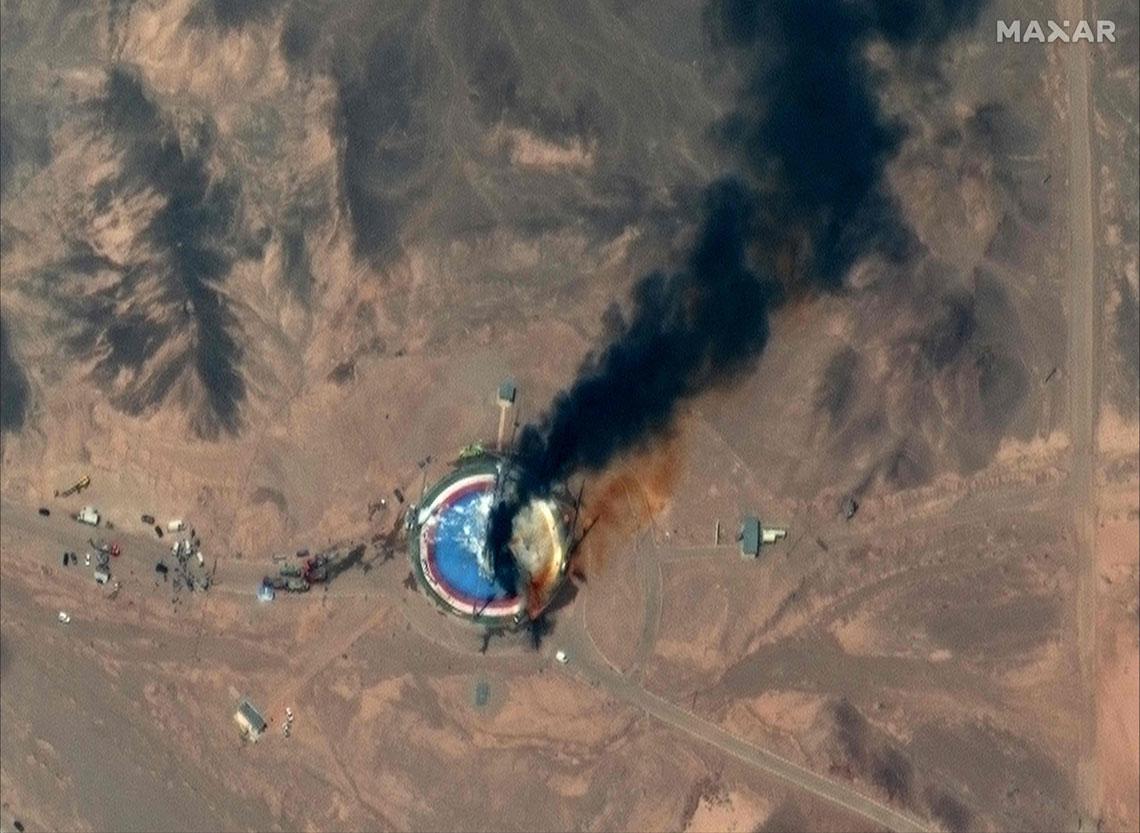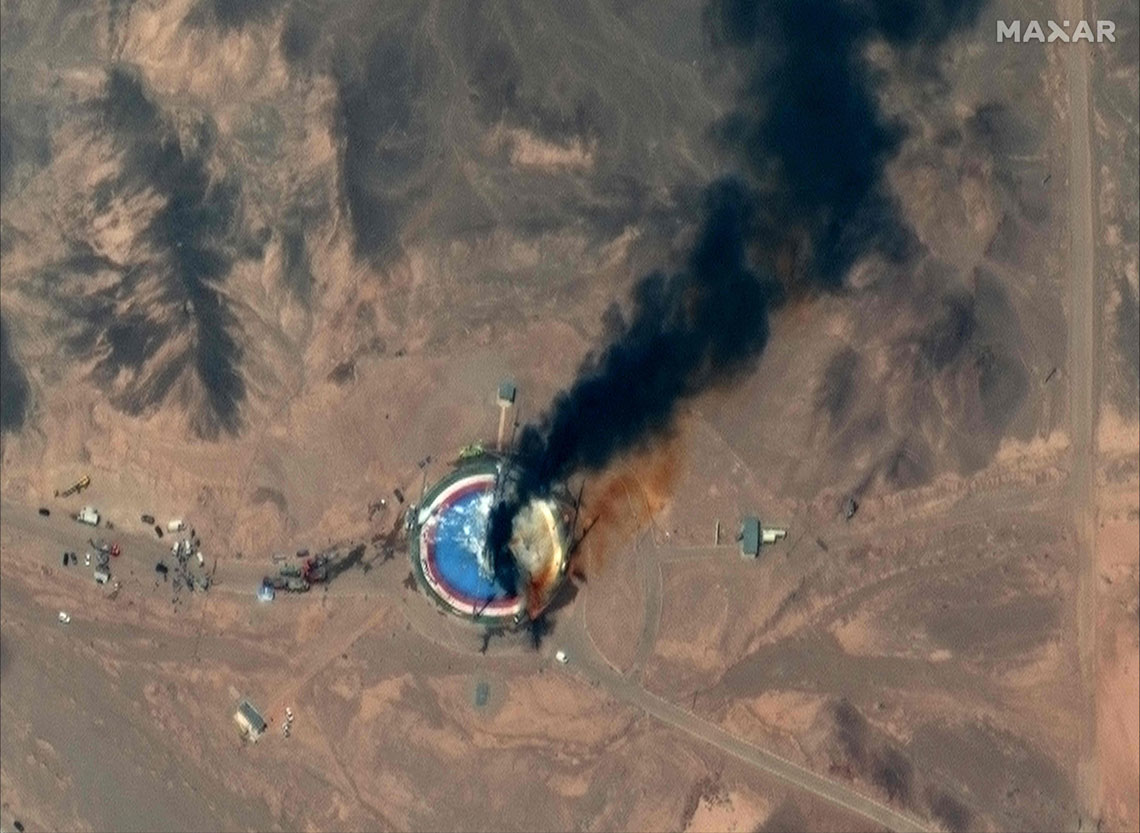Iran, Trump in Twitter spat over satellite launch
TEHRAN - Iran showed off an undamaged satellite on Saturday, days after a rocket exploded on its launchpad in the third failed launch of the year, which US President Donald Trump had tweeted about hours earlier.
The United States has warned Iran against rocket launches, fearing the technology used to put satellites into orbit could help it develop the ballistic missile capability needed to launch nuclear warheads, though Tehran denies its activity is a cover for such development.
On Friday, Trump posted on Twitter a photo of what appeared to be the site of a failed Iranian satellite launch, raising questions about whether he had disclosed US surveillance secrets.
The Safir is a two-stage Iranian satellite launcher, the first rocket developed by Iran capable of placing a satellite into orbit. The accident on Friday was the third time Iran has failed to place a satellite into orbit this year.
Iran’s Minister of Communications and Information Technology Mohammad Javad Azari-Jahromi has said that Iran would launch three satellites into orbit by March despite US pressure to curb Tehran’s ballistic missile program.
In mid-August, he said Iran was preparing to launch a locally built telecommunications satellite named Nahid 1 (Venus 1).
Iran launched its first satellite Omid (Hope) in 2009 and its Rasad (Observation) satellite was also sent into orbit in June 2011. Tehran said in 2012 that it had successfully put its third domestically-made satellite Navid (Promise) into orbit. In 2013 it launched a monkey into space.
Iran has denied reports that it was attempting to launch a satellite on Friday, with reporters being shown the Nahid 1 satellite at a state-run lab on Saturday, Iranian news agencies said.
Asked about the explosion that led to the failed launch, Jahromi said the defence ministry should announce incident details, Iran's semi-official Mehr news agency said.
"But what we do know is that the Nahid satellite is still being prepared at the Iranian Space Research Institute," he added.
Earlier, Jahromi posted a picture on Twitter that purported to show him with the satellite.
The rocket exploded on its launch pad on Thursday, an Iranian official had told Reuters, although Iranian media did not report the failed launch. A US official also said Iran suffered a satellite launch failure.
The black-and-white photo posted by Trump showed the fire-blasted launch site at a space center in northern Iran including a damaged gantry service tower and a downed mobile erector launcher.
Trump, in his tweet, cited the specific location of the site, saying the United States was not involved in the "catastrophic accident... at Semnan Launch Site One in Iran."
Speaking to reporters at the White House later on Friday, Trump defended his posting of the photo and reiterated that the United States had nothing to do with the incident.
"We had a photo. I released it, which I have the absolute right to do," Trump said.
He said the Iranians "were going to set off a big missile and it didn't work out too well. Had nothing to do with us."
"I wish Iran best wishes and good luck in determining what happened at Site One," Trump said in his tweet.
Patrick Eddington, a former CIA satellite imagery analyst, said the photograph tweeted by Trump appeared to be a classified image taken by a US spy satellite.
"If the president simply tweeted out an image from classified briefing that utilizes our most advanced overhead collection capabilities, it is no doubt welcome news to our adversaries," said Eddington, now a research fellow at the CATO Institute.
"While he has the authority to declassify any federal document, Twitter is not a legitimate or responsible way to do so."
A US defense official told CNBC that the picture, which appeared to be a snapshot of a physical copy of the satellite image, was included in an intelligence briefing on Friday.
The Pentagon did not have any immediate comment.
The Trump administration has ratcheted up economic pressure on Iran this year with economic sanctions to try to force it to renegotiate a pact reached with world powers in 2015 limiting its nuclear program. Trump withdrew the United States from the pact in May last year.
Trump has offered to hold talks with Iran but Tehran says first it must get relief from US sanctions.



